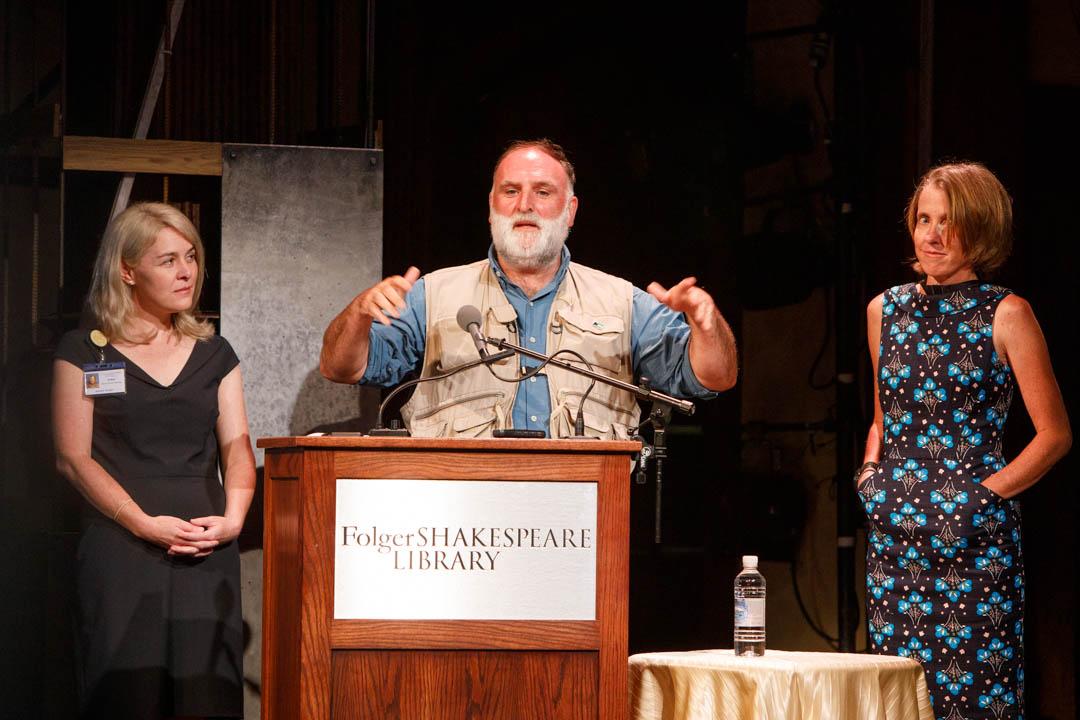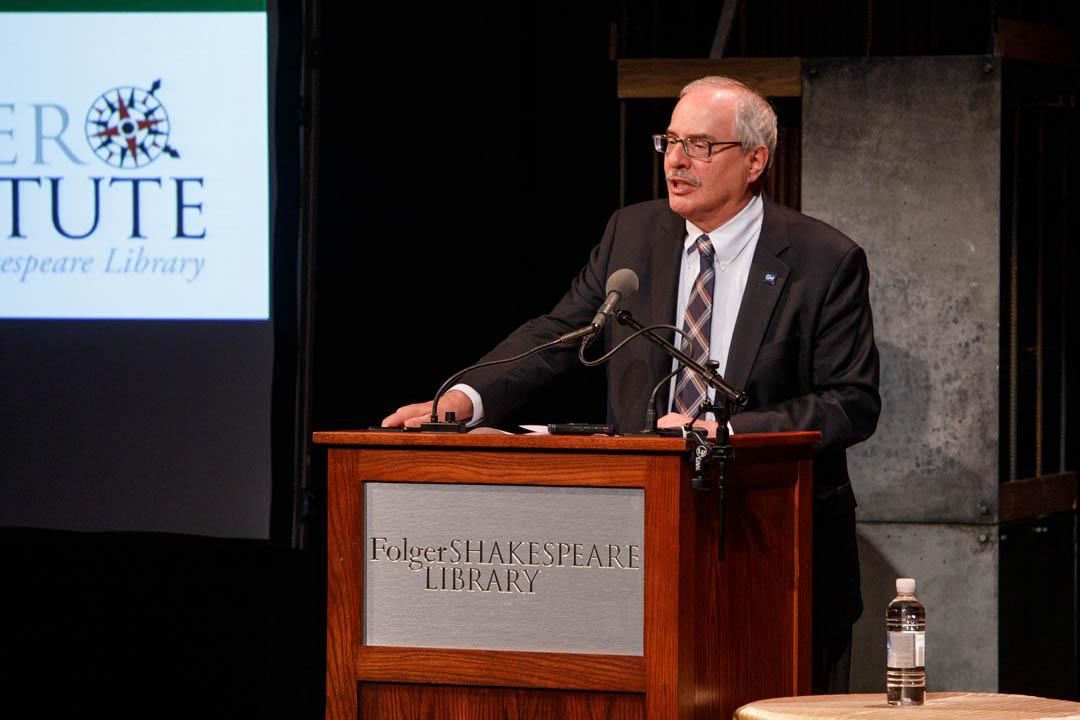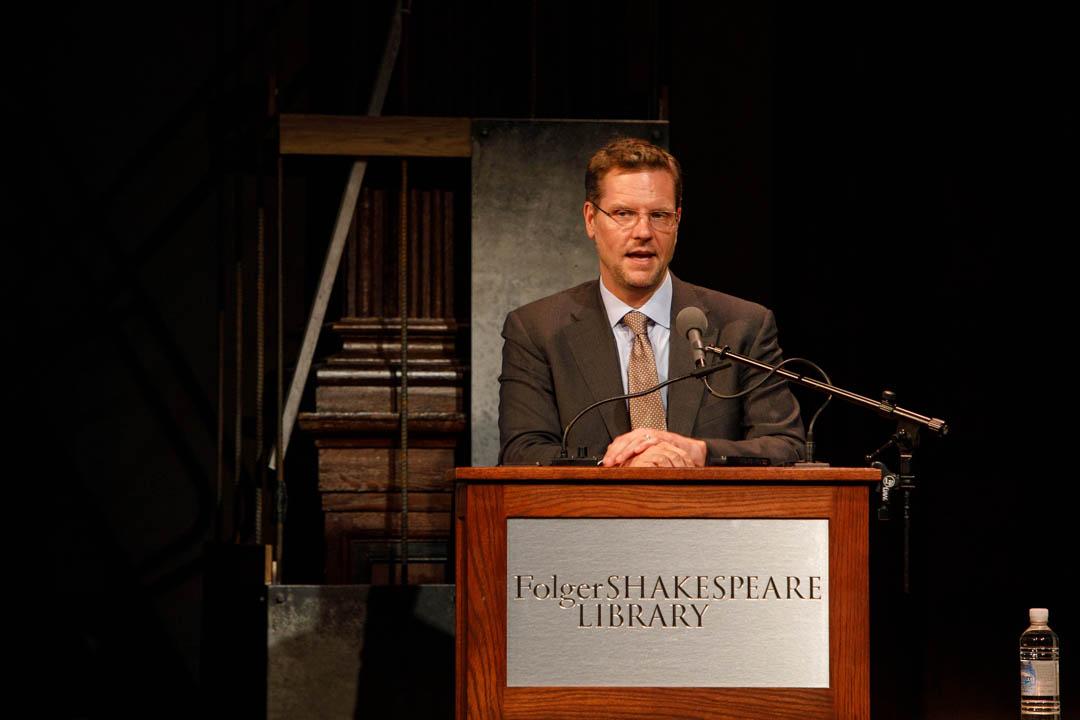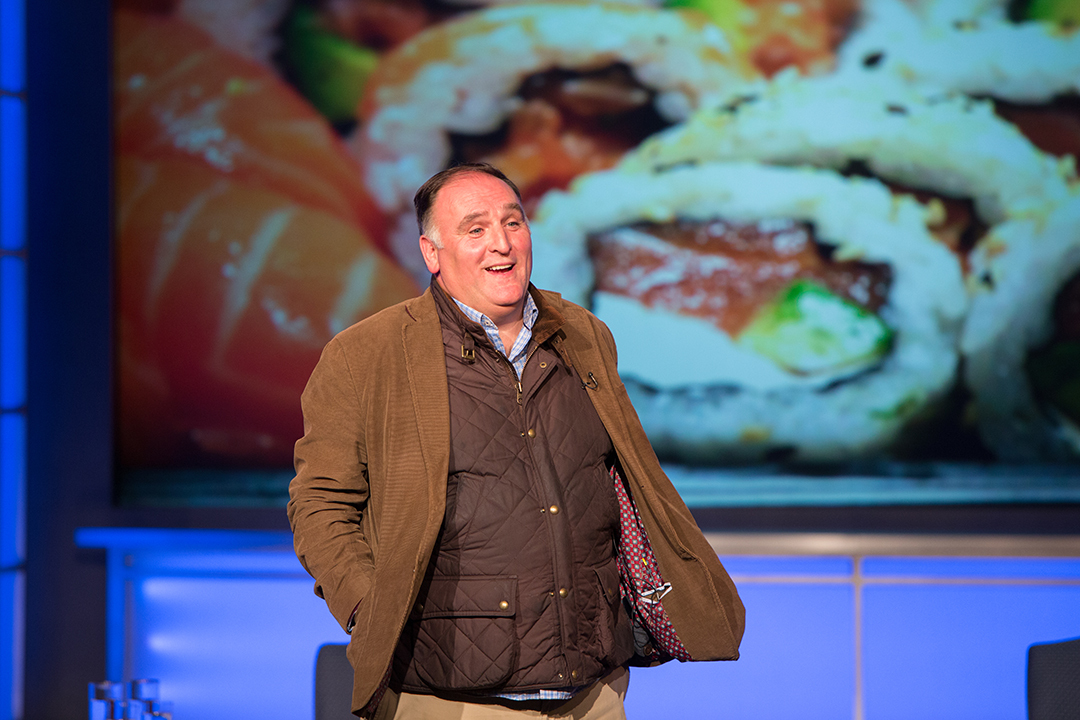By B.L. Wilson
Only a small number of the George Washington University students in Chef José Andrés’ “World on a Plate” course had visited the Folger Shakespeare Library, a hidden treasure on Capitol Hill.
It holds the world’s largest collection of Shakespeare material in a repository two floors beneath the library. Tuesday evening, the class met in a darkened theater done in the style of Tudor England with heavy oak columns and facades.
Michael Witmore, the director of the Folger Library, explained that the library had received a $1.5 million grant from the Andrew Mellon Foundation for a project called Before Farm to Table, Early Modern Food Ways and Culture. The project’s aim is to investigate the ways in which food illuminates the lives, struggles and passions of people who were alive during William Shakespeare’s lifetime.
Dr. Whitmore introduced GW President Thomas LeBlanc who said it was his first time at the Folger and that he was there to learn as well. This session he said was a chance for students not only to observe research but also to conduct primary research themselves.
“Opportunities like these experiential learning events highlight the value of examining a topic, in this case food, that appears so simple,” he said. “Yet what we think we know from the outside doesn’t always align with what we uncover. That surprise…is the beauty of research.”
Mr. Andrés arrived at the library straight from a plane from the Bahamas where his World Central Kitchen team had reached a milestone of serving more than 300,000 meals—a feat that he said was possible because of what they had learned from the Hurricanes Katrina and Maria.
He reminded the students of the role of food in historical events, such as “the rediscovery of America” by Christopher Columbus who was searching for a spice route to India; Mahatma Gandhi’s revolt against the British tax on salt; and more recently the Arab Spring revolt set off by a Tunisian food vendor who set himself afire in protest when his produce was seized by police.
“We can keep going on and on about moments that were super important in the way we are feeding the world, that are a clue about what we are doing wrong and how we can …feed the world in a smarter, more sustained way,” he said.
Heather Wolfe, an associate librarian for audience development, and Amanda Herbert, associate director of fellowships at the Folger, then described the research on the Before Farm to Table project, focusing on noted British and American culinarians: Hannah Woolley, the first woman to publish a cookbook in English, and Hercules, an enslaved African American who was the first chef of the United States in charge of President George Washington’s kitchen.
“Food ways in Shakespeare’s world had a lot in common with our modern ones,” Ms. Wolfe said. “Food inequalities have long been structural…the people who grow, harvest, package, prepare and serve food remain invisible to the people who eat it.”
The remainder of the evening was spent in interactive sessions in the reading rooms where students were asked to transcribe handwritten 400-year-old recipes that were not entirely legible and did not have standardized spelling.
At one table, sophomores Sophia DePumpo and Georgena Mierow, and senior Isha Rauf transcribed a 16th century “Cabob” recipe. They were momentarily stumped by the word mutton, guessed rightly at yelk being the old spelling for yolk and puzzled over whether it was “elder” or “cider” vinegar the mutton should rest in before being “spitted.”
They became interested in the class because they’d been to Mr. Andrés’ restaurants but also needed to satisfy course requirements.
“I wanted to get more info about the way he thinks and how that comes across,” Ms. Mierow said. “I’m really interested in food and learning the background of different ingredients and experimenting on my own.”
After transcribing the recipes, they then looked closely at rare books on global food networks, dietary books and artist prints of food that were displayed on tables in another reading room.
“Having the Folger Library so close to the university with so many books of the early modern history of America, Britain and other places having so much to do with food… is a great resource for understanding who we are through the story of food,” Mr. Andrés said.











